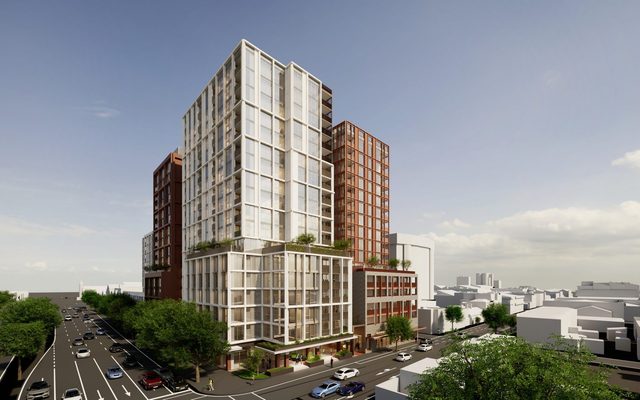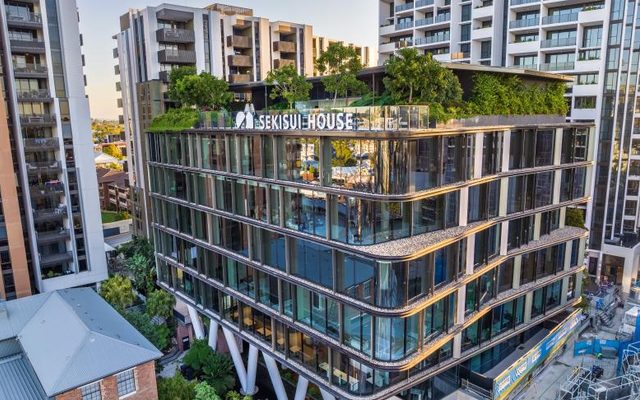This article is from the Australian Property Journal archive
PERTH's residential property prices are at risk of overheating because there are not enough houses to accommodate the 1,000 people moving to the city every week.
Real Estate Institute of Western Australia president David Airey said the diminishing level of listings in metropolitan Perth in the wake of strong population growth will create upward price pressure and increased demand for homes.
“Perth’s population is growing at around 1,000 people every week and the market is turning over around 1,000 properties every week. As our population continues to grow on the back of the state’s healthy economy there will be ongoing pressure with the housing system,” he added.
According to REIWA, properties for sale had slipped to just 8,429 compared to 14,092 at the same time last year. The long term equilibrium for Perth is around 12,000, while the lowest number of listings recorded by REIWA was 4,793 in June of 2006.
“Agents are reporting an increasing shortage of properties in popular price ranges especially around the median of $500,000. REIWA data suggests that listing stock is trending downwards on the back of strong sales turnover and these properties are not being replaced with enough new listings to meet demand.
“Now that the market appears to have turned in favour of sellers, many may be holding back with the expectation of a better price in the months ahead. Until more sellers list their properties and until we get more new homes onto the market from builders, then competition from buyers will put pressure on prices.” Airey said.
On the east coast, Queensland units and townhouses sales increased by 8.9% in the December quarter 2012 compared to the same period in 2011, according to the Real Estate Institute of Queensland.
REIQ CEO Anton Kardash said the driving force behind the improving sales volumes was the southeast corner.
The numbers of sales in Brisbane was up 16% compared to the December quarter in 2011; sales on the Gold Coast were up 8%; and on the Sunshine Coast, the sales numbers increased an impressive 23% over the same periods.
“Compared to the December quarter in 2011, the numbers of sales in Brisbane and the Gold and Sunshine coasts continues to trend upwards, which of course partly reflects the concentration of, and demand for, these types of properties in SE QLD,” he said.
There has also been an increase in the numbers of affordable unit sales, especially for properties priced between $250,000 and $350,000, as buyers take advantage of some attractively-priced properties.
According to REIQ, the median price of units and townhouses on the Sunshine Coast also increased 1.1% to $328,500 over the quarter with Noosa Heads and Noosaville also both recording price growth.
The Brisbane median unit price decreased 4% to $389,000 over the quarter but posted an increase of 0.3% over the year ending December. Over the period there was also a marked rise in the numbers of sales between $250,000 and $350,000 which reduced the overall median price.
Cairns recorded median unit price growth of 5.5% to $205,000 over the December quarter and also posted an increase in sales of 8% compared to the same period in 2011.
Kardash said while there has been an increase in demand for units in the Cairns region, discounting has been partly responsible for this rise in interest as the area is still struggling with high body corporate and insurance levies following Cyclone Yasi more than two years ago.
Townsville posted median unit price growth of 10.3% to $308,875 over the December quarter however this was partly due to the compositional change in sales over the period. That is, the numbers of sales in the $350,000 to $500,000 price range increased significantly over the quarter which pushed the overall median price up.
In New South Wales, median house prices have also lifted, according to research from the Real Estate Institute of New South Wales.
The December 2012 REINSW Property Profile saw the median house price in the Sydney metropolitan market at $594,000, an increase of 6.1% on the median price recorded 12 months ago and a 4.2% rise on the September quarter.
REINSW CEO Tim McKibbin said the results indicated a marked improvement in sentiment.
“With confidence returning and stimulus in the form of interest rate reductions of 125 basis points in 2012, I believe that the green shoots of improvement are evident and a platform for a far brighter future in 2013 has been constructed,” he added.
The inner suburbs of Sydney remained stable over the last year, while the middle and outer suburbs experienced positive changes. The median house price for the inner suburbs remained at $1,050,000 for the 12 months to December 2012. The middle suburbs increased 2.9% to $751,000 over the last 12 months. The outer suburbs experienced an uplift of 4.4% to $470,000 in December 2012.
The median unit price for the Sydney metropolitan area increased in the quarter ended December 2012. At $477,500, the median unit price is up 3.2% over the three months to December 2012, and is 3.8% above the median unit price recorded in December 2011. In the inner suburbs, a 4.6% increase brought the median unit price to $595,000. The middle suburbs saw a 5.0% increase to $462,000 and the outer suburbs lifted 2.7% to $385,000.
In major NSW regional centres prices also increased. Both the Wollongong and Newcastle Local Government Areas (LGA) experienced increases for the three months to December 2012, with median house prices of $450,000 and $400,000 respectively.
McKibbin said these prices were also up on those recorded 12 months ago at 2.3% for Wollongong and 4.3% for Newcastle.
The median house prices for the Albury and Coffs Harbour LGAs fared similarly, with both increasing for the three months to December 2012.
“With a median house price of $280,000, the Albury LGA is 3.7% ahead of its September 2012 level, and Coffs Harbour’s $385,000 median is 3.36% in front of September 2012. The Lake Macquarie LGA also performed well, with a 3.9% jump in the median house price over the last three months to $400,000, bringing the total increase over the 12 months to 6.9%,” he concluded.
Property Review



